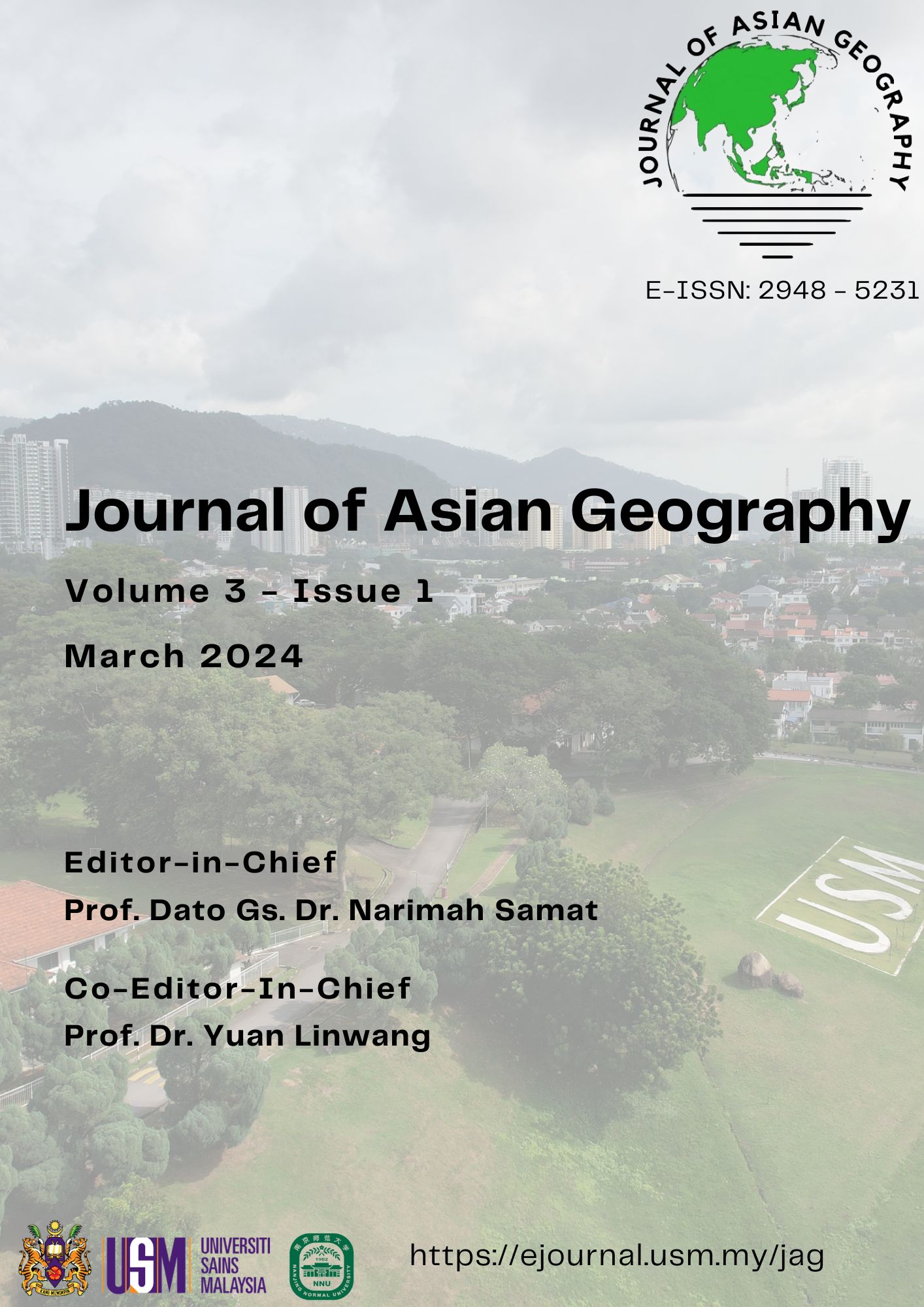Utilizing Geographic Information Systems to Zone Landslide-Prone Areas for Urban Development in the Kandy Municipal Region, Sri Lanka
DOI:
https://doi.org/10.36777/jag2024.3.1.1Keywords:
Kandy,, Landslides, Zonation, Development, DisastersAbstract
This investigation aims to delineate areas susceptible to landslides based on the current state of development in the Kandy Municipal Council Areas. Unplanned urbanization is taking place in many areas of Kandy city including landslide-vulnerable areas. Landslide vulnerability constraints the sustainable development of the city because city planning and management authorities do not have spatial information to guide the development. This inquiry employs the sophisticated Geographic Information System methodology, leveraging the formidable capabilities of Geospatial Information Technology. To accomplish this objective, various parameters including terrain, soil composition, drainage patterns, precipitation distribution, road infrastructure, and building locations have been meticulously analysed and integrated through a process of superimposition using weighted overlay techniques in GIS. Consequently, by overlaying the socio-economic development data with the identified zones of landslide susceptibility, a comprehensive depiction of areas prone to landslides, and the associated risks faced by roads and structures, has been developed. The findings of this study indicate that approximately 35% of the areas are classified as high-hazard zones, while approximately half fall under the medium-hazard category. The remaining areas are identified as low-hazard zones. The outcomes of this investigation are expected to provide invaluable support to urban planners and policymakers, facilitating informed decision-making in the domain of urban development.

Downloads
Published
Issue
Section
License
Copyright (c) 2024 Journal of Asian Geography

This work is licensed under a Creative Commons Attribution 4.0 International License.

